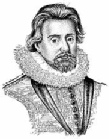

Holy Trinity
Amblecote
Versions of the Bible in English
The world’s most printed book is the Bible. This has been produced in many versions and translated into numerous languages. This page attempts to trace the history of the most well known editions whilst recognising that other versions exist.
1380 AD
John Wycliff, an Oxford theologian, produced the first hand written manuscripts in English.


Johannes Gutenberg, the father of printing, produced the first ever printed volume which was the Bible although this was in Latin not English.
1450 AD
William Tyndale with the help of Desiderius Erasmus printed a Greek/Latin New Testament
During 1525-
1516 AD

Miles Coverdale finished translating and printing the first complete Bible in the English Language – The Coverdale Bible.

1535 AD
John Rogers, using the pseudonym ‘Thomas Matthew’ printed the second complete English Bible which has come to be known as Matthew’s Bible
1537 AD

Archbishop Thomas Cranmer, at the behest of Henry VIII, hired Miles Coverdale to produce the “Great Bible” so called because of its large size. This version was authorised for public worship. A copy was chained to the pulpit in every English Parish Church so that everyone could hear the Bible in English. In all seven editions were printed.
1539-

1557-
The Church of Geneva produced first a New Testament and then a complete Bible known as the Geneva or Breeches Bible. (Breeches because of a term used for the clothing of Adam & Eve in the book of Genesis).

1568 AD
This year saw the publication of the Bishop’s Bible which seems to have been a more acceptable version, to the Anglican Church, than the Geneva Bible.

A version of the New Testament, translated in the city of Rheims was produced by the Roman Catholic Church. This became known as the Rheims New Testament.
The publication of a compilation of a translation of the Old Testament made at Doway with the New Testament of Rheims into what was called the Doway-
1582 AD
1609 AD

The King James Version of the complete Bible was produced. This translation began in 1605 and built on many of the earlier versions. Gradually this work became more popular and became the most printed book in history.
1611 AD



Noah Webster, the American perhaps better known for his Dictionary, produced a translation of his own but this had little impact on the popularity of the King James Version of 1611.
1833 AD
Saw the introduction of the English Standard Version which was an attempt to combine readabily with accuracy. This edition owes much to the efforts made by previous modern English translators.
1881 AD
This year saw a revision of the King James Bible known as the English Revised Version.

1901 AD
The Americans produced a bible very similar to the English Revised Version known as the American Standard Version

1971 AD

The American Standard Version was revised and became the New American Standard Version. Some consider it to be the most accurate word for word translation yet made.

1973 AD
The New International Version was produced which was designed mainly for its ease of reading. It has become the best selling modern English translation.
1982 AD
The New King James Version, published by Thomas Nelson, attempted to update the more archaic language of the original King James Version of 1611.

2002 AD

 Go to top
Go to top
2002 AD
Special Editions
Editions for specific readers have been produced, this is The School Bible presented to pupils of Amblecote CofE School in the 1920’s onwards. It was printed in story form without the verses found in a more traditional Bible making it easier to read. (Loaned by Bernard Hewins).

Acknowledgements
Wikipedia
www.Greatsite.com
www.bibletopics.com/biblestudy/81.htm